GlobalWafers Co (環球晶圓), the world’s No. 3 silicon wafer supplier, yesterday said that revenue would rise moderately in the second half of this year, driven primarily by robust demand for advanced wafers used in high-bandwidth memory (HBM) chips, a key component of artificial intelligence (AI) technology.
“The first quarter is the lowest point of this cycle. The second half will be better than the first for the whole semiconductor industry and for GlobalWafers,” chairwoman Doris Hsu (徐秀蘭) said during an online investors’ conference.
“HBM would definitely be the key growth driver in the second half,” Hsu said. “That is our big hope to make this year’s revenue flat, or slightly better than last year’s. Increases in memory revenue are very important.”
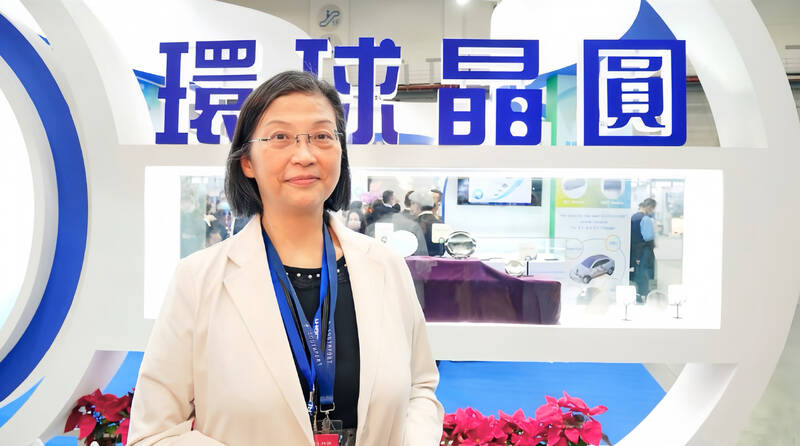
Photo: Fang Wei-chieh, Taipei Times
Growing interest in AI applications has spurred greater demand for advanced epitaxial wafers than GlobalWafers had expected, she said, adding that the company is churning out new capacity to catch up with the high demand.
However, challenges remain, as the company expects a mild recovery in the second half of this year, dragged by customers’ slower-than-expected inventory digestion and softening demand for wafers used in vehicles and industrial devices, the company said.
Revenue this quarter is expected to rise slightly from last quarter, when GlobalWafers’ revenue plummeted 19 percent year-on-year to NT$15.09 billion (US$466.2 million).
“It is still our goal to keep revenue flat compared with last year. I would say that it is challenging because some inventory situations look tough, very sticky and very slow,” Hsu said.
Earthquakes are also a major uncertainty this year, she added.
Since last month’s massive earthquake, measuring 7.2 on the Richter scale, Taiwan has experienced more than 1,300 aftershocks, each of which contribute to production delays, she said.
Nevertheless, GlobalWafers said that earthquakes would have a minimal effect on its revenue this quarter, as it is allocating capacity to other sites to make up for production losses.
The company yesterday reported that net profit in the first quarter fell 29 percent to NT$3.53 billion, compared with NT$5 billion in the first quarter of last year. On a quarterly basis, net profit contracted 20.5 percent from NT$4.44 billion.
Gross margin dropped to its weakest level in about six years at 34.3 percent, compared with 40.6 percent a year earlier and 34.5 percent in the previous quarter.
The company said it would take a few years to improve its gross margin to the key level of 40 percent, as its three-year capacity expansion plans through 2026 would increase equipment depreciation costs in the coming years.
GlobalWafers said it expects depreciation costs this year to surge to between NT$9 billion and NT$10 billion, from NT$6.71 billion last year.
The company also expects a subsidy under the US CHIPS and Science Act and investment credits from the US and other countries to alleviate pressure from depreciation costs, it said, adding that higher equipment utilization would also help.
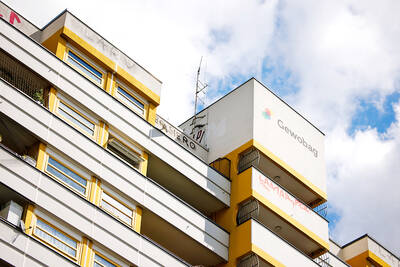
When an apartment comes up for rent in Germany’s big cities, hundreds of prospective tenants often queue down the street to view it, but the acute shortage of affordable housing is getting scant attention ahead of today’s snap general election. “Housing is one of the main problems for people, but nobody talks about it, nobody takes it seriously,” said Andreas Ibel, president of Build Europe, an association representing housing developers. Migration and the sluggish economy top the list of voters’ concerns, but analysts say housing policy fails to break through as returns on investment take time to register, making the
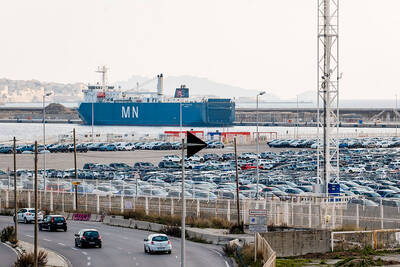
‘SILVER LINING’: Although the news caused TSMC to fall on the local market, an analyst said that as tariffs are not set to go into effect until April, there is still time for negotiations US President Donald Trump on Tuesday said that he would likely impose tariffs on semiconductor, automobile and pharmaceutical imports of about 25 percent, with an announcement coming as soon as April 2 in a move that would represent a dramatic widening of the US leader’s trade war. “I probably will tell you that on April 2, but it’ll be in the neighborhood of 25 percent,” Trump told reporters at his Mar-a-Lago club when asked about his plan for auto tariffs. Asked about similar levies on pharmaceutical drugs and semiconductors, the president said that “it’ll be 25 percent and higher, and it’ll
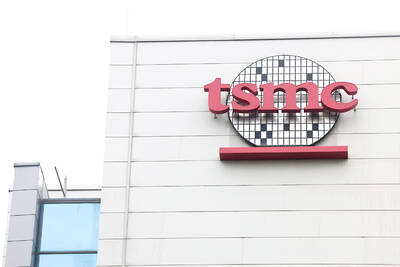
NOT TO WORRY: Some people are concerned funds might continue moving out of the country, but the central bank said financial account outflows are not unusual in Taiwan Taiwan’s outbound investments hit a new high last year due to investments made by contract chipmaker Taiwan Semiconductor Manufacturing Co (TSMC, 台積電) and other major manufacturers to boost global expansion, the central bank said on Thursday. The net increase in outbound investments last year reached a record US$21.05 billion, while the net increase in outbound investments by Taiwanese residents reached a record US$31.98 billion, central bank data showed. Chen Fei-wen (陳斐紋), deputy director of the central bank’s Department of Economic Research, said the increase was largely due to TSMC’s efforts to expand production in the US and Japan. Investments by Vanguard International
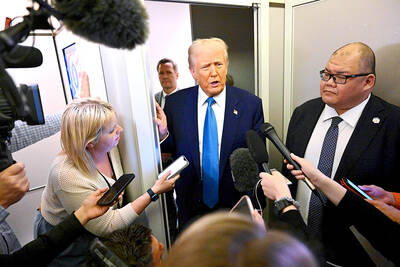
WARNING SHOT: The US president has threatened to impose 25 percent tariffs on all imported vehicles, and similar or higher duties on pharmaceuticals and semiconductors US President Donald Trump on Wednesday suggested that a trade deal with China was “possible” — a key target in the US leader’s tariffs policy. The US in 2020 had already agreed to “a great trade deal with China” and a new deal was “possible,” Trump said. Trump said he expected Chinese President Xi Jinping (習近平) to visit the US, without giving a timeline for his trip. Trump also said that he was talking to China about TikTok, as the US seeks to broker a sale of the popular app owned by Chinese firm ByteDance Ltd (字節跳動). Trump last week said that he had